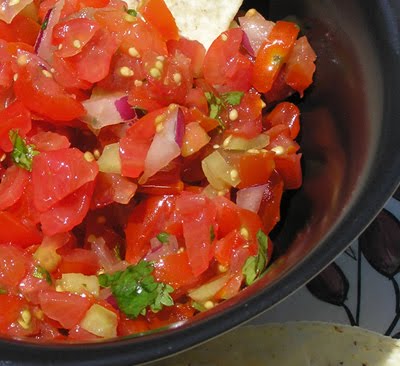For many in New York, the unveiling of green grasses in Central Park and cleared sidewalks previously covered by months of snow is a welcomed sight. Sunny days and warm weather will be fast approaching. But as important as it is to catch those much needed rays, this change also happens to mark the beginning of another growing season. You've never laid a hand on a trowel or had the privilege of picking your own veggies and fruits you say? Well, no worries, for we're about to introduce you to a simple, yet wonderfully effective growing technique for you to implement right at home.
Though we here at Rooftop Salsa are sincere advocates of greenhouse-enclosed hydroponic farming, due to its year round production ability, we realize that not everyone has the opportunity to engage in such activity. However, there are still numerous steps people can take to reduce the number of food miles logged everyday
across this globe. Whether you have a small outdoor balcony off your apartment or a sprawling (by NYC standards) backyard patio, when you're in the city you simply have to maximize your space. There's no getting around it.
Yet thanks to Willem Van Cotthem, Honorary professor at the University of Ghent in Belgium and founder of the Seeds for Food project , there's an ingenious way to grow your fruits and veggies on your patio or balcony while still preserving this precious space. How? By building your own low-tech vertical farm. If you've never picked up a hammer, no need to worry, we're not talking about the true waste-to-energy recapturing, multi-story systems featured at The Vertical Farm Blog. For these all you will need is a wooden board, eye screws, square screw hooks, piece of rope, and prepared plastic bottles. It can literally be put together in an afternoon, yet you'll reap benefits for years to come. Plus it's extremely cheap, it's efficient, and it's a ton of fun once up and running.
These systems are currently being used, for instance, in places like the Tindouf region of Algeria. Able to rely on simple materials like shopping bags and plastic bottles, it has proven highly effective at eliminating some of the hunger and vitamin deficiencies endemic to refugee camps and schools of the region.
Additionally, your own vertical farm will
These are just some of the benefits offered by this type of low-tech system. So don't delay in building one, odds are half the materials are already sitting around your house somewhere. To get step-by-step instructions for building your own though, check out professor Van Cotthem's full tutorial on his container gardening website. But do it quick, the earlier you start the more salsa you can make!
- Help conserve irrigation water
- Yield multiple times more produce per sq ft
- Avoid a lot of hosting and weeding
- Prevent soil run-off
- Provide for easy mobility of plants
- Allow for easier control of soil
- Offer the joy of growing vegetables and fruits where traditionally impossible
- Provide a windbreaker or screen for privacy
- Allow for easier pest control
- Create an aesthetically pleasing backdrop for your patio or balcony
- And of course give you the freshest tasting fruits and veggies you'll have all summer long





No comments:
Post a Comment